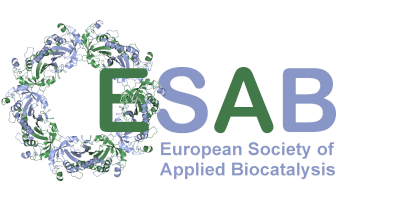Bio-digital fusion to establish biofoundry technology for rapid development of microbial cell factories
Abstract
We have developed rapid cell factory construction technology (biofoundry platform), which is an integrated system (DBTL) of advanced technologies such as metabolic design system (Design), rapid breeding technology using long chain DNA-transfected microorganisms (Build), rapid and accurate metabolic evaluation technology (Test), and machine learning or mathematical modelling for further improvement and a new metabolic pathway design (Learn). As metabolic design system, we developed BioProV and M-path, new simulation tools that enable metabolic design for the biosynthesis of unnatural compounds. Gene components such as inducible artificial promoters and terminators were developed to synthesize designed metabolic pathways and gene circuits. To efficiently construct cell factories by re-write genome based on designs, we have developed the platform technologies such as genome editing and a large gene cluster synthesis systems and are going to integrate to set up the automated systems. By tethering the DNA deaminase activity to nuclease-deficient CRISPR/Cas9 system, a genome editing tool that enables targeted point mutagenesis have developed (termed Target-AID or Base Editor). In addition, an efficient DNA assembly method, namely, Ordered Gene AssemblyinB. subtilis (OGAB) method have developed. OGAB method can assemble more than 50 DNA fragments to construct up to 100 kb DNA in one-step usingB. subtilis. An automated metabolomics analysis system has also been developed to analyse the performance of cell factories in more accurate and high throughput manner. We are applying this biofoundry platform for construction of various cell factories. By BioProV design tool with enzyme engineering technology, we succeeded in expanding the scope of bioproductiontargets. Application of constructing artificial metabolic pathways has demonstrated by the C4 unsaturated compound 1,3-butadienesynthesis inEscherichia coli. Butadiene biosynthetic pathway is designed in silico, and then realize it by constructing artificial enzyme with rational design.
About the Speaker(s)
 Akihiko Kondois Akihiko Kondo received his Ph.D. from Kyoto University in Chemical Engineering (1988). He has started his faculty career in 1988 in the Department of Applied Chemistry at Kyushu Institute of Technology. He was appointed as full professor of Kobe University in Department of Chemical Science and Engineering in 2003 and also appointed as a team leader at RIKEN Center for Sustainable Resource Sciences (CSRS) in 2012. He was appointed a dean of Graduate School of Science, Technology and Innovation at Kobe University in 2016. He became a member of Science Council Japan in 2017 and deputy director of RIKEN CSRS in 2020 and Vice President of Kobe University in 2021.
Akihiko Kondois Akihiko Kondo received his Ph.D. from Kyoto University in Chemical Engineering (1988). He has started his faculty career in 1988 in the Department of Applied Chemistry at Kyushu Institute of Technology. He was appointed as full professor of Kobe University in Department of Chemical Science and Engineering in 2003 and also appointed as a team leader at RIKEN Center for Sustainable Resource Sciences (CSRS) in 2012. He was appointed a dean of Graduate School of Science, Technology and Innovation at Kobe University in 2016. He became a member of Science Council Japan in 2017 and deputy director of RIKEN CSRS in 2020 and Vice President of Kobe University in 2021.
A. Kondo has developed various platform technologies such as cell surface display systems, metabolic pathway design tools, metabolic analysis technologies, genome editing and long chain DNA synthesis technologies. He also hasapplied these platform technologies for construction of various microbial cell factories for production of biofuels and various chemicals from biomass, and cyanobacteria and microalgae for production of oil and chemicals from CO2. He is the scientific founder of several companies including BioPalette (genome editing), Synprogen (genome synthesis), AlgaeNexus (microalgae) and Bacchus Bio innovation (Biofundry).
He has published more than 750 peer reviewed international papers.
